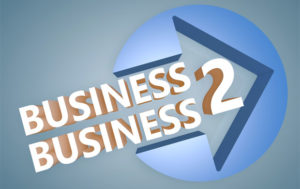Significant Q4 wins and earnings numbers reflect the strength of Oracle’s resurgence as a cloud company. At its earnings call earlier this week, CEO Mark Hurd mentioned some big names — including Johnson & Johnson, the Cleveland Clinic, Baylor University and AT&T — that made significant commitments to Oracle in the quarter.
It’s no wonder then that CEO Safra Catz was in a mood to remind the audience that “last year, I forecast double-digit non-GAAP earnings per share growth for FY18, and we delivered 14 percent growth this year, largely driven by strong growth in our cloud businesses. Looking ahead to FY19, I expect revenue growth will enable us to deliver double-digit non-GAAP earnings per share growth once again.”
Oracle’s financial report was full of good news.
For the full fiscal year 2018, total revenues were up 6 percent to US$39.8 billion compared with fiscal 2017. FY18 cloud services and license support revenues were up 10 percent to $26.3 billion. FY18 Cloud License and on-premise license revenues were down 4 percent to $6.2 billion.
FY18 GAAP operating income was up 8 percent to $13.7 billion, and GAAP operating margin was 34 percent. FY18 non-gaap operating income was up 9 percent to $17.6 billion, and non-GAAP operating margin was 44 percent. FY18 GAAP net income was $3.8 billion, and non-GAAP net income was $13.2 billion. FY18 GAAP earnings per share was $0.90, while Non-GAAP earnings per share was $3.12.
What the Numbers Tell Us
For many years, Oracle has been spending heavily on research and development to produce a range of products — from Fusion cloud apps to the Autonomous Database, as well as hardware like Exadata — that uniquely support the database’s autonomous mission.
With the majority of software and hardware development done, the company lately has turned to building cloud data centers, and customers have begun migrating to them.
“AT&T is moving thousands of databases and tens of thousands of terabytes of data into the Oracle Cloud,” founder Larry Ellison noted. “We think that these large-scale migrations of Oracle database to the cloud will drive our PaaS and IaaS businesses throughout FY19.”
There has been some amount of concern that Oracle might have missed the opportunity to be a player in the cloud. Amazon, with AWS, and other companies have deployed relatively inexpensive infrastructures to the cloud. Salesforce has come to dominate the front office, while SAP and Workday have occupied important positions in the back office.
Different Drumbeat
However, as it has done before, Oracle decided not to play out any of the scenarios that others had perfected. In going for advances in hardware and infrastructure — such as the automated database and derivative automated products, cloud apps, and a platform — the company has taken highly competitive positions in all areas of modern IT.
This is not to say that Oracle doesn’t have competition — it does. Amazon, Google, Microsoft, Salesforce and SAP, just to name a few, offer advanced technologies and are well run companies that put customers at the center of their businesses.
Still, Oracle has an installed customer base of more than 400,000 corporations around the world, and their choice has been to wait and convert to Oracle cloud systems or to start over with a new vendor.
It is an incestuous business, with SAP and Salesforce using the Oracle Database, for example. Most enterprises use a mix of vendors to deliver information to users, so it’s far from a winner-take-all market. All vendors have been carving out significant niches, and at this point it appears there’s room for all of them.
The idea that they’ll take all of Oracle’s business or that Oracle will take theirs in a zero-sum game is remote. The IT industry likely will remain an oligopoly, much like the airline industry, for the foreseeable future.
Next Great Leap Forward
That’s why forward thinkers have been floating the idea of the information industry as a utility, along the lines of electricity or telephone. In order to have a utility and the seamless interoperability it implies, however, the industry will need to come together to develop and deploy a set of standards for APIs and metadata interoperability.
In the 1970s, a similar convergence took place around the idea of data storage, and the relational database and SQL were the result. We’re at a similar inflection point today, and perhaps Oracle’s rebirth, evidenced in its continuing stream of upside revenue and earnings numbers, will provide more reason for today’s IT leaders to converge in the next great leap forward in information processing.

























































